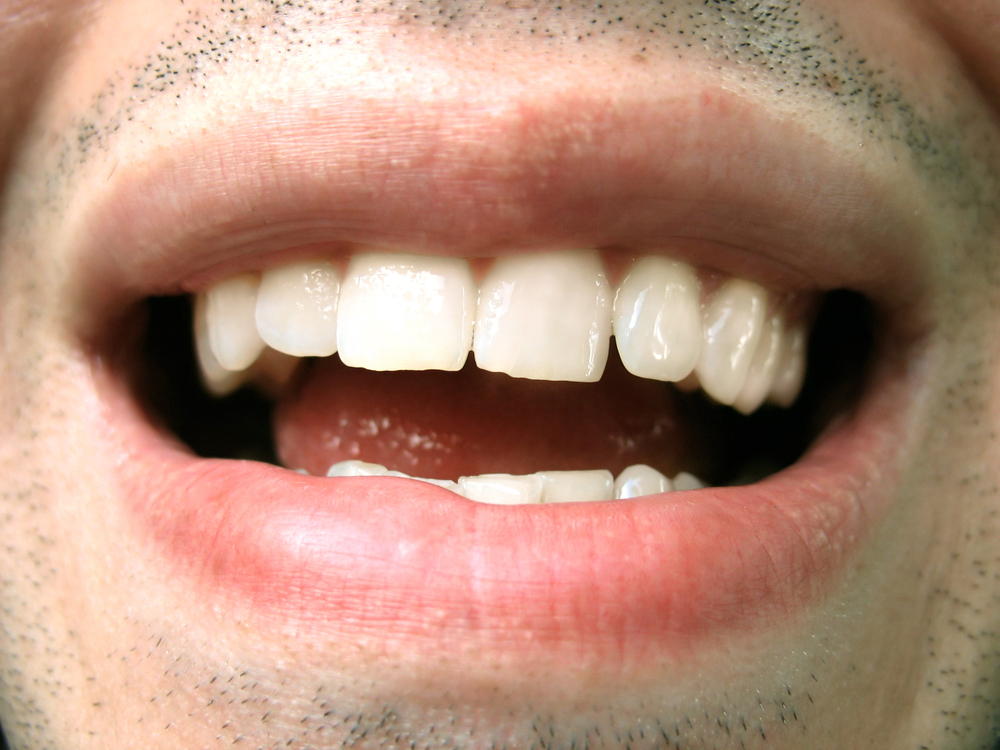The terms “lisp” and “tongue thrust” are often used to describe the same thing, but they are different. Lisp refers to a speech disorder and tongue thrust actually refers to a way of swallowing.
Here are the differences between a lisp and a tongue thrust, along with the impact each one has on your dental health.
Lisp
A lisp is a speech disorder in which a person mispronounces the letters “s” and “z”, generally replacing them with a “th” sound. Instead of saying please, a person with a lisp will pronounce the word as “pleathe”.
Many children will have a lisp up to the age of around 4 ½ years as they develop their vocabulary and learn how to properly speak. There are 4 different types of lisps.

Frontal/Interdental Lisp
In this type of lisp, the tongue pushes through the teeth creating the “th” sound when trying to pronounce words with “s” and “z” in them.
Dentalized Lisp
In this type of lisp, the tongue doesn’t push through the teeth, but it touches or pushes against the back of the front teeth.
Bilateral Lisp
When pronouncing the letter “s”, both sides of the tongue should curl up. In this type of lisp, both sides of the tongue remain flat, allowing air to escape from the corners of the mouth. This produces a slurred or slushy sound.
Palatal Lisp
In a palatal lisp, the mid-section of the tongue pushes against the roof of the mouth, towards the back of the mouth.
Tongue Thrust
A tongue thrust, or reverse swallow, occurs when a person pushes food toward their gums or front teeth when swallowing.
All babies are born with a tongue thrust, but children generally learn to swallow with their lips closed and learn to use their tongues to move food back towards their throats by the age of 7.
Causes of Lisps
There are many different factors that are believed to cause lisps, which include:
- Overbites or underbites
- Missing front teeth
- Wearing dental appliances
- Thumb/finger sucking

Another common cause of interdental or dentalized lisps are tongue thrusts. If you have a lisp, you may also have a tongue thrust.
How to Know if You Have a Tongue Thrust
In normal swallowing, your teeth and lips are sealed and the tip of your tongue presses against the top teeth. Your tongue moves food towards your throat when you swallow, making a wave-like motion.
When you have a tongue thrust, the sides of your tongue push against the front part of your teeth. Your jaw is typically open, even if your lips aren’t open
The front part of your tongue and the tip of your tongue move forward in a thrusting motion against or through your teeth, and sometimes through your lips. This pushes food back towards the front of your mouth.
What Should You Do?
While lisps can generally be treated with speech therapy, tongue thrusts require both dental treatment and speech therapy. Braces are a common part of the treatment, especially if the lisp is a result of an over- or underbite.

If you believe you have a lisp or tongue thrust, talk with one of our expert dentists to help you choose the best treatment for you.
For more information or to schedule a dental appointment, contact Greenspoint Dental in Houston, Texas. We are dedicated to providing you and your loved ones with the best dental care.

